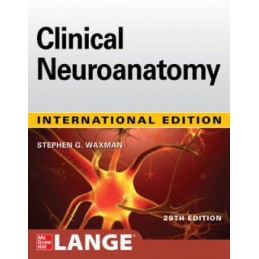- Reduced price

Order to parcel locker

easy pay


 Delivery policy
Delivery policy
Choose Paczkomat Inpost, Orlen Paczka, DHL, DPD or Poczta Polska. Click for more details
 Security policy
Security policy
Pay with a quick bank transfer, payment card or cash on delivery. Click for more details
 Return policy
Return policy
If you are a consumer, you can return the goods within 14 days. Click for more details
A comprehensive, color-illustrated guide to neuroanatomy and its functional and clinical applications
Engagingly written and extensively illustrated, Clinical Neuroanatomy, Twenty-Ninth Edition gets you up to speed on neuroanatomy, its functional underpinnings, and its relationship to the clinic. Youll learn everything you need to know about the structure and function of the brain, spinal cord, and peripheral nerves. This authoritative guide illustrates clinical presentations of disease processes involving specific structures, explores the relationship between neuroanatomy and neurology, and reviews advances in molecular and cellular biology and neuropharmacology as related to neuroanatomy.
The book is packed with case studies and hundreds of visuals—including CT and MRI scans, block diagrams showing muscle actions, root-by-root and nerve-by-nerve images of sensory areas and muscle intervention, and more—to help you retain critical information.
Essential for board review or as a clinical refresher, Clinical Neuroanatomy features::
Data sheet
